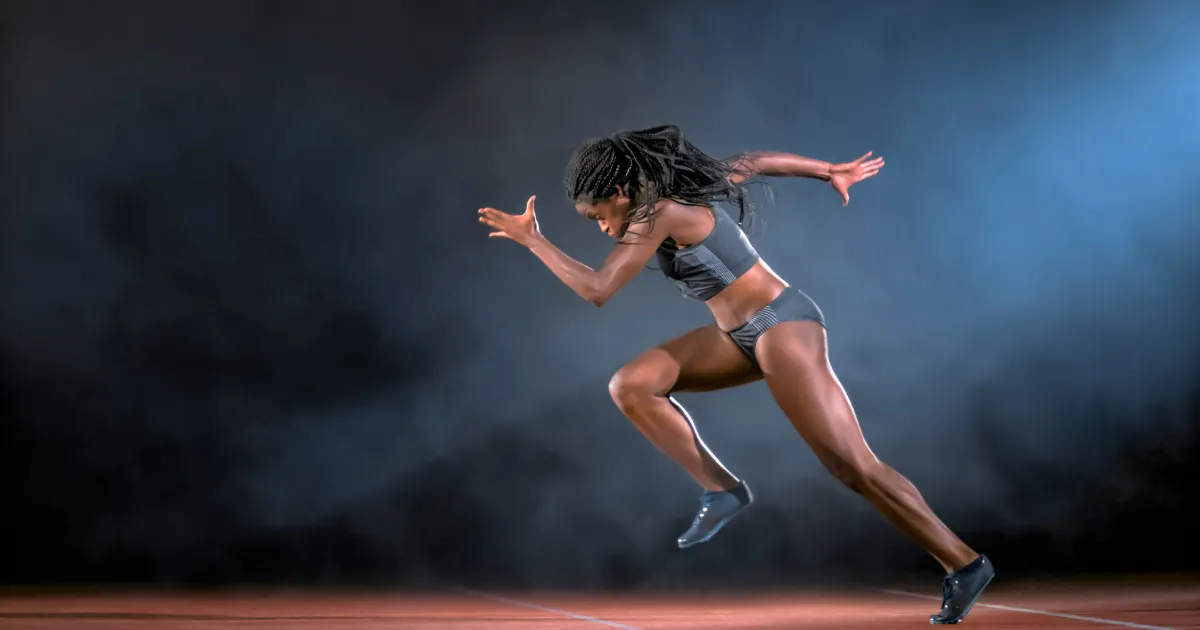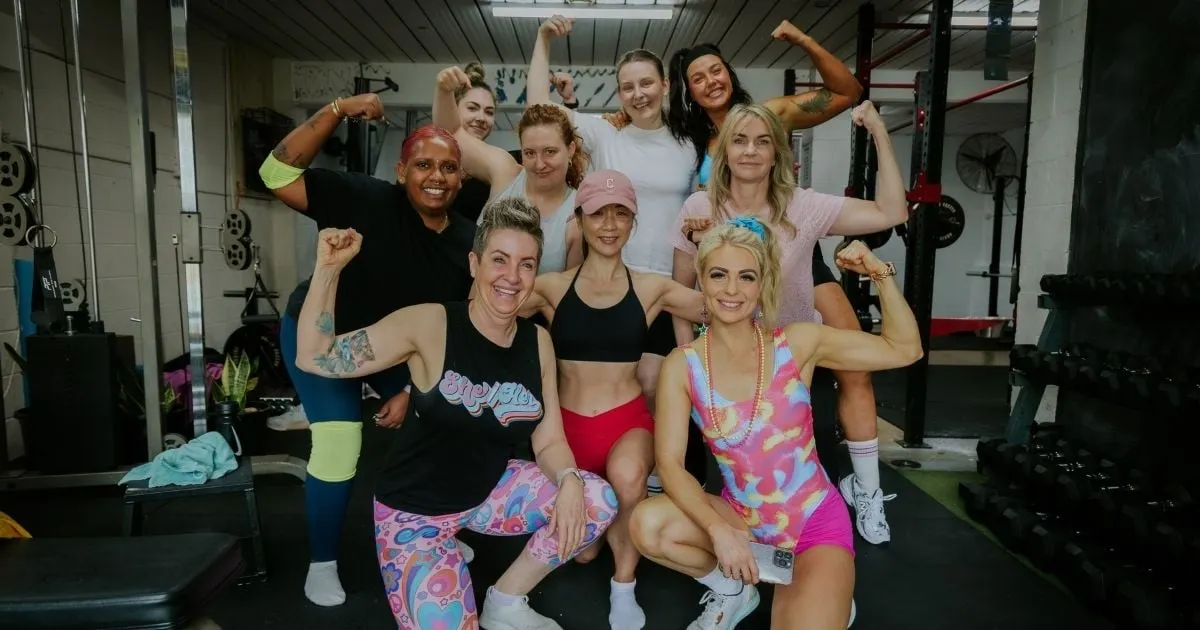How to Improve Sports Performance with Strength Training

The Key to Running Faster, Jumping Higher, and Preventing Injuries
If you’re a teenage girl playing sport, or a parent supporting her performance and well being there’s one secret weapon that too few are using: strength training.
And, if you’ve ever heard the myth that strength training slows athletes down, it’s time to leave that belief in the past.
Today’s top athletes, from track stars to soccer players, all rely on structured resistance training as part of their routine.
Why? Because the difference between an amateur and a professional often comes down to one thing: strength.
Why Strength Training is Essential for Young Athletes
Whether you want to run faster, jump higher, or avoid injuries, strength training can help you get there.
Here’s how:
Improved Coordination
- Strength training helps athletes build body awareness and control. This translates into better movement patterns on the field, court, or track.
More Explosive Power
- Exercises like squats, lunges, and deadlifts (when taught correctly) enhance your ability to sprint, change direction, and jump. Key movements in nearly every sport.
Injury Prevention
- Stronger muscles and joints are more resilient. A well-designed strength training plan reduces the risk of sprains, strains, and overuse injuries, which are all too common in young athletes.
Greater Endurance
- Contrary to old-school thinking, strength training doesn’t make you bulky or slow. It builds efficiency so you can play harder, for longer, with less fatigue.
Confidence On & Off the Field
- Learning how to lift builds more than just muscle, it builds a sense of pride and confidence that spills over into every area of life, including school and sport.
The Myth: Strength Training Slows You Down
This outdated belief often holds girls back from training the way elite athletes do.
But research, and real-world evidence tell a different story.
When done correctly, strength training:
- Improves sprint speed by building stronger, more explosive leg muscles.
- Enhances agility and balance, helping with quick changes of direction.
- Protects growth plates when programmed safely with body weight and band resistance as a foundation.
Modern-day athletes know the truth: strength is a performance enhancer. And when started young, it becomes a lifelong advantage.
What Makes a Strong Program for Teen Girls?
The key isn’t just lifting weights, it’s lifting smart. That means working with coaches who understand how to:
- Periodise your training to avoid burnout or over training
- Complement your sport (whether you play netball, swim, dance or run)
- Build strength progressively without sacrificing flexibility or speed
At The Evolved, we start with body weight, resistance bands, and light dumbbells to master technique and assess movement.
As strength improves, so does the capacity to progress safely, and powerfully.
Whether you train once per week or every day, strength work should fit around your sport, not against it.
That’s why a properly periodised plan is essential, so you recover well, perform at your peak, and avoid setbacks.
The Best Strength Exercises for Teenage Athletes
Build Explosive Power, Speed & Injury Resilience with These Foundational Lifts
When it comes to strength training for sports performance, not all exercises are created equal.
While machines and isolated movements have their place, it’s compound barbell lifts that offer the biggest return on investment for athletes looking to move faster, hit harder, and stay injury-free.
Here are three of the most effective strength-building movements for teen athletes:
Barbell Squats
Barbell squats develop explosive leg power, core strength, and hip mobility. All essential for sprinting, jumping, and changing direction.
Squatting under a bar teaches athletes how to move under load, stabilise their spine, and generate power from the ground up. Every major field and court sport benefits from stronger legs.
Barbell Deadlifts
Deadlifts build posterior chain strength in the glutes, hamstrings, and back which is critical for speed and injury prevention.
They also improve grip strength, posture, and body awareness. This lift teaches athletes how to hinge from the hips and brace effectively, movements directly transferable to running, jumping, and tackling.
Power Cleans
Power cleans are an advanced movement that builds full-body explosiveness and coordination.
They teach the body to generate force quickly, making them ideal for athletes who need to accelerate, jump high, or react fast.
They're commonly used in elite athletic programs across sports from netball and AFL to rugby and basketball.
These lifts aren’t just about strength, they’re about developing the athletic traits that separate the good from the great.
When taught properly, they are safe, scalable, and incredibly effective.
Contact Sports & The Strength to Withstand Force
As female participation in traditionally male-dominated, high-contact sports like rugby league, Aussie rules, and martial arts continues to rise, the demands on young athletes are changing.
Today’s female athletes must not only be quick and agile, they must also be able to handle collisions, resist tackles, and stay injury-free in unpredictable, physical environments.
Think of it this way:
Would you rather lift 60kg in a safe, controlled gym setting... or have 60kg running directly at you on the field at full speed?
A well-coached strength program prepares young athletes for the reality of their sport, so their bodies aren’t the weak link in performance or safety.
Strength isn’t optional anymore. It’s a protective and performance-enhancing necessity.
Strength Training for Non-Contact Sports with High Injury Rates
Support Flexibility, Control & Injury Prevention in Dance, Gymnastics & Ball Sports
Strength training isn’t just for athletes in contact sports, it’s equally essential for those in non-contact sports where technical precision, repetition, and joint loading are high. In fact, many of the most common injuries we see in young female athletes come from overuse or instability, not collisions.
Sports like dance, ballet, gymnastics, netball, and tennis demand explosive power, endurance, mobility, and control often under fatigue or pressure.
Without strength as a foundation, even the most talented girls can end up sidelined with avoidable injuries like:
- Knee and ankle sprains
- Shin splints and stress fractures
- Hip impingements and lower back pain
- Rotator cuff strain or tennis elbow
Why Strength Training Matters Here Too
Strength training improves:
- Joint stability through strong muscles and connective tissue
- Force absorption and landing mechanics, especially in jumping sports
- Posture and core control, crucial for balance, turns, and endurance
- Symmetry and coordination, reducing dominant-side compensation
These benefits translate directly into safer movement patterns, stronger performances, and longer careers.
Strength Doesn’t Compete with Flexibility. It Supports It
A common fear in disciplines like dance is that lifting weights will make you stiff or bulky.
In reality, the opposite is true. A well-designed strength program enhances range of motion, improves joint control, and supports active flexibility.
Movements like:
- Single-leg deadlifts strengthen hamstrings while training balance
- Goblet squats build leg and hip strength in flexible positions
- Band-resisted glute bridges support turnout and hip alignment
When strength meets mobility, performance and injury resilience both skyrocket.
Smart Strength for Every Sport
Whether your daughter plays rugby or does ballet, the goal is the same: build a body that performs at its best and holds up under pressure.
Strength training, when tailored to her sport, her age, and her experience level, is one of the most powerful tools she can have in her corner.
A Lifelong Athletic Foundation Starts Now
If you’re serious about playing your sport to your full potential, or if you’re simply tired of recurring injuries and want to feel stronger in your body. Strength training is the next step. And it doesn’t have to be scary or complex.
With the right support, the gym becomes an extension of your sport, a place to evolve, build confidence, and unlock your full athletic potential.
If strength training is the next step in your journey, click here to learn how to get started in a beginner-friendly way.

